Online Order Throttling
This document will walk you thru different ways to set rules around your online order time
How to Configure the Default Order Time and Throttle Range
- The Default Order time is the number of minutes a customer will be quoted for how long their online order will take until ready
- The Throttle Range minutes is the number of minutes it will look back in the system to evaluate sales revenue and order count.
How to create a new rule
- Backoffice --> POS --> Online Ordering --> Throttling tab --> Click on Add New Record
- For each rule you create you will need to decide on the amount of time you'd like added to the default order time. and place that number in the "minutes" section
- If you uncheck the checkbox for "Additive" then the time you place in that field will just override the default order time. (See Example # 5 below )
- Next you will need to decide which filter you are going to use for this specific rule (Details on each filter below)
- Most often it is 1 filter per rule, but if you use multiple filters, know that it will need to be both filters in order for the rule to work.
- For example, if you set an order count of 15 and Revenue of $1000, then the system will look for both things to be true before your rule goes into effect. If you have $2000 but only 14 orders, your rule will not go into effect.
- The two filters that are for "Online Order Filters" are rules that would most often be used with the system wide filters.
- For example if you want the Order type filter to also look at the revenue in store, then you'd want both of those filters in 1 rule
- Most often it is 1 filter per rule, but if you use multiple filters, know that it will need to be both filters in order for the rule to work.
- Last you can optionally set a time period for this rule or change the dates that they rule will be in effect.
- Example, if you only want this rule to be in effect on your busy Friday and Saturday dinner rush, you'd want to uncheck the other days of the week and put in a time range of 5pm-8pm.
Create rule by Order Count
- When you create a rule by order count, the system is looking at the number of orders that were rang into the system in the throttle time range.
- In this example below, If there are 30 orders rang into the system in the 30 minutes I have set for the throttling time, then the online order default time is going to go up by 20 minutes. The default order time is set to 20 minutes, this rule adds 20 minutes, so the time the customer would be quoted is 40 minutes for their order to be ready.
- It does not look at what is on the orders or dollar amounts at all, It just looks at the actual numbers of orders.
Create rule by Revenue
- When you create a rule by revenue the system is looking at the total dollars in sales rang into the system during the throttling time range
- In this example below, If there is $500 in revenue rang up in the 30 minute range, then the online order default time is going to go up by 15 minutes. The default order time is set to 20 minutes, this rule adds 15 minutes, so the time the customer would be quoted is 35 minutes for their order to be ready.
- This rule does not look at the number of orders that are rang in. The $500 in sales could be within 5 orders.
Create rule by Order Subtotal
- When you create a rule by Order Subtotal, it is only looking at the specific order that was placed online.
- It is not using the order throttling range or looking in the system at the order count or revenue
- In this example below, If the customer rang in a single order that was over $100, then their online order default time is going to go up by 10 minutes FOR JUST THEIR ORDER. The default order time is set to 20 minutes, this rule adds 10 minutes, so the time the customer would be quoted is 30 minutes for their order to be ready.
Create rule by Order Type
- When you create a rule by Order Type it is looking at the Online order types that are available.
- Most people only have 1 order type available right now, and that is "Pick Up" But if you do have another order type this could be helpful.
- In this example below, we have an account that allows customer from the brewery next door to place an order online and they will walk it next door. So If they choose the order type of "Walk Next Door" then you could add 5 minutes to the default order time.
Create rule to override the default time
- Be default all rules are "Additive" time, this way if you ever change your Order Default time, then the rules will still add on the appropriate amount of additional time.
- But you can create a rule that overrides the default time if you uncheck the "Additive" Checkbox
- In this example below, I have unchecked that box, so every Friday and Saturday nights from 5pm to 8pm the order time will go up to 35 minutes instead of 20 minutes.
Importance of Rule Order
- Rules are followed in order from top to bottom.
- As soon as it finds a rule it fits, it will apply that rule and stop looking.
- So it is important to put higher value rules on top of lower value rules.
- For example, if the $500 revenue adding 15 minutes was above the $1000 revenue adding 30 minutes, then as soon as there was $500 it would add the 15 minutes, but it would stop looking, and if a couple minutes later the store hit $1000 in sales, it wouldn't change because its only looking at the $500 in sales.
- Most common order of placing the rules in order of importance is:
- Order Subtotal
- Revenue
- Order Count


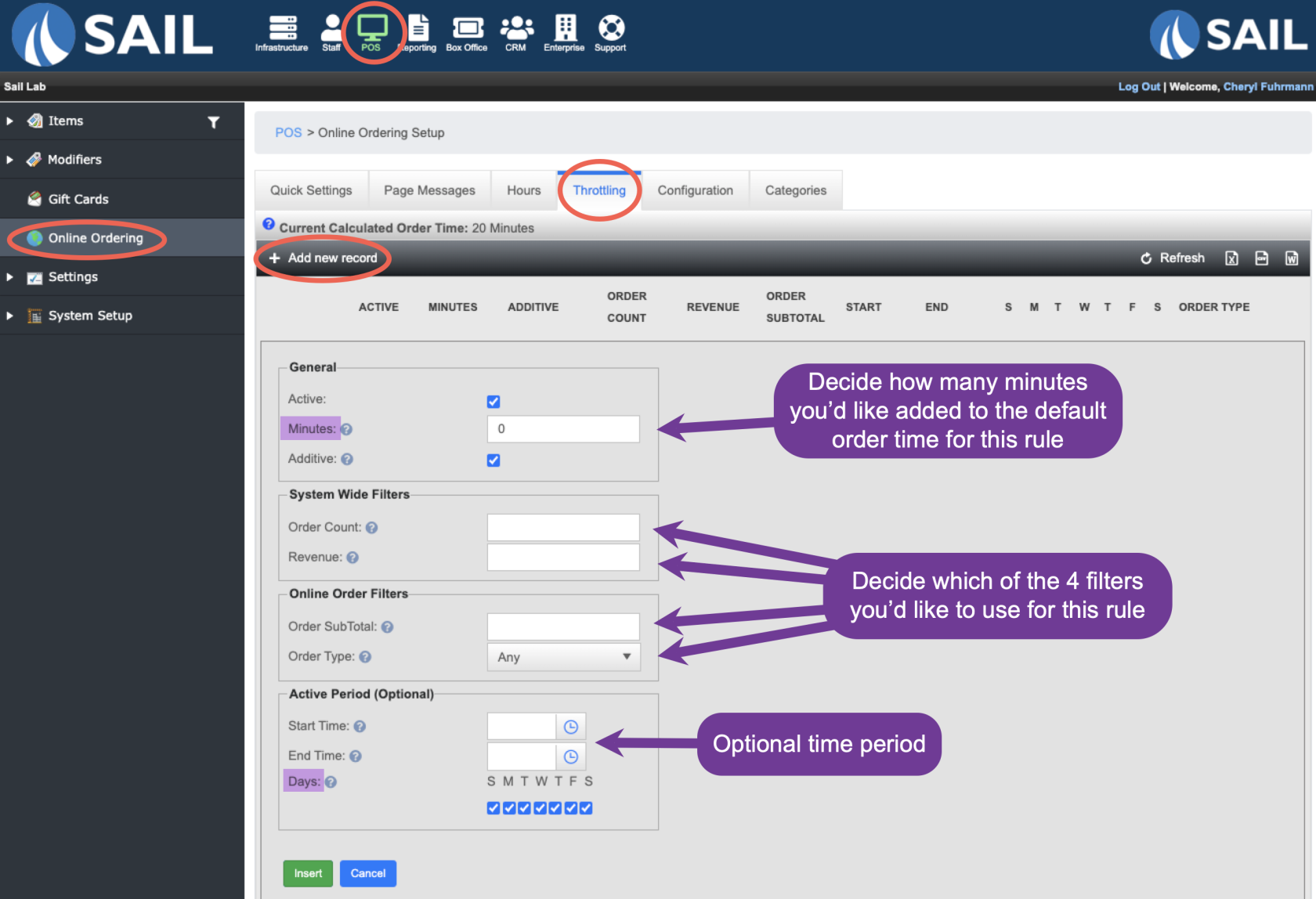
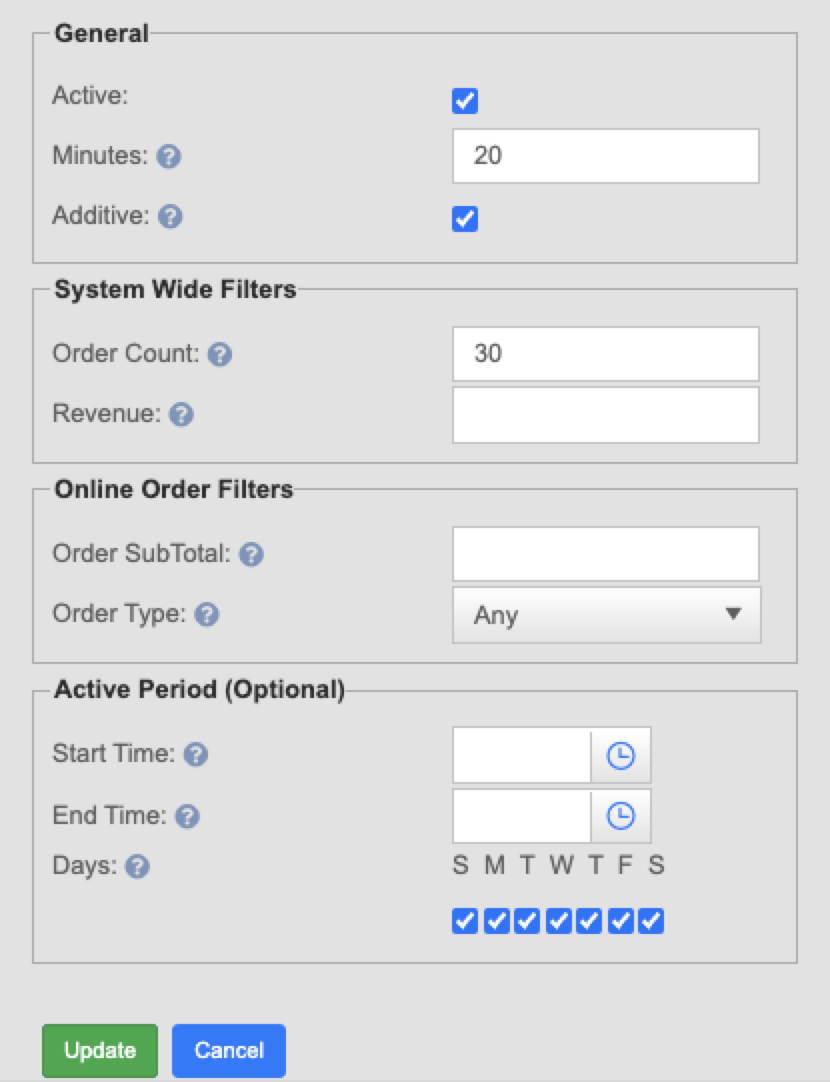
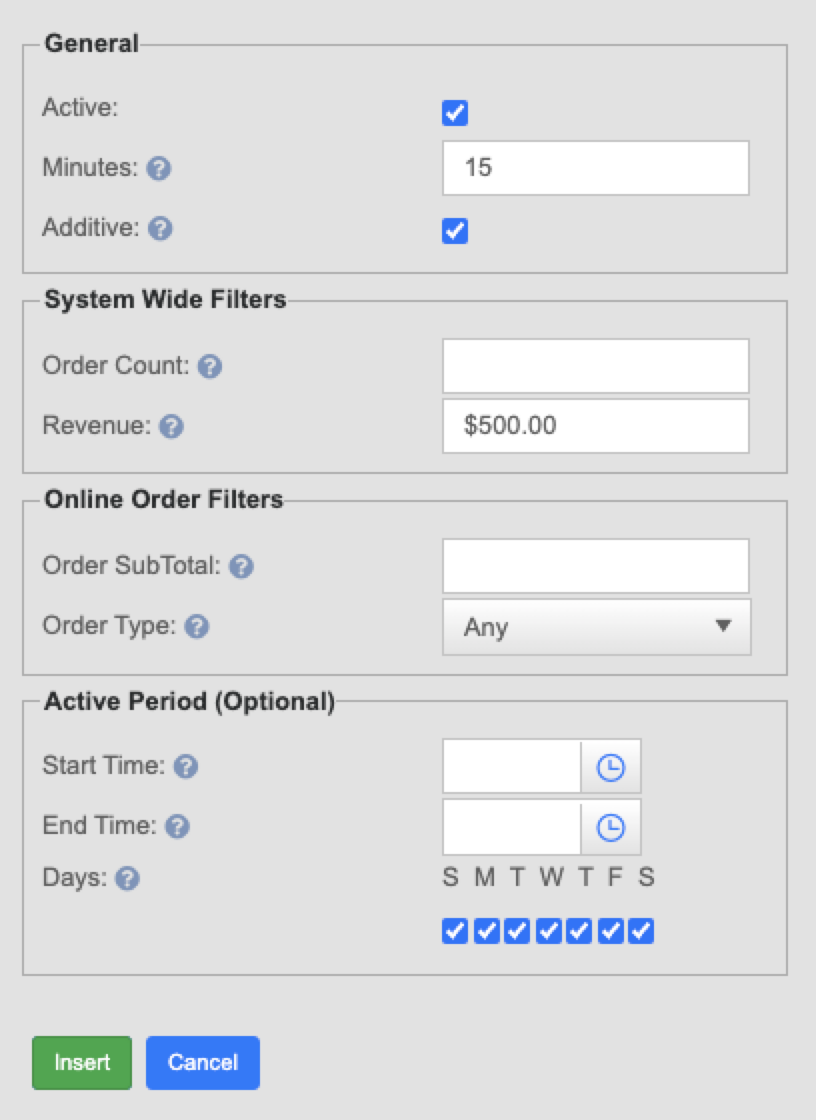
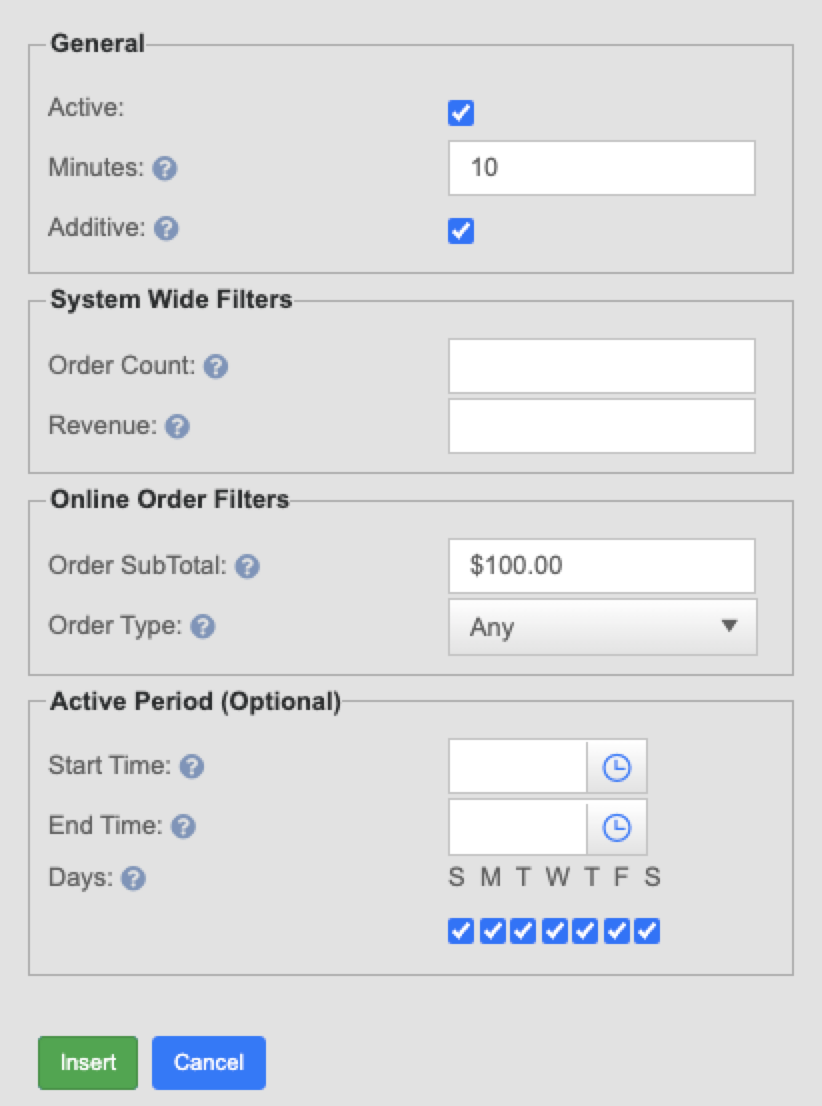
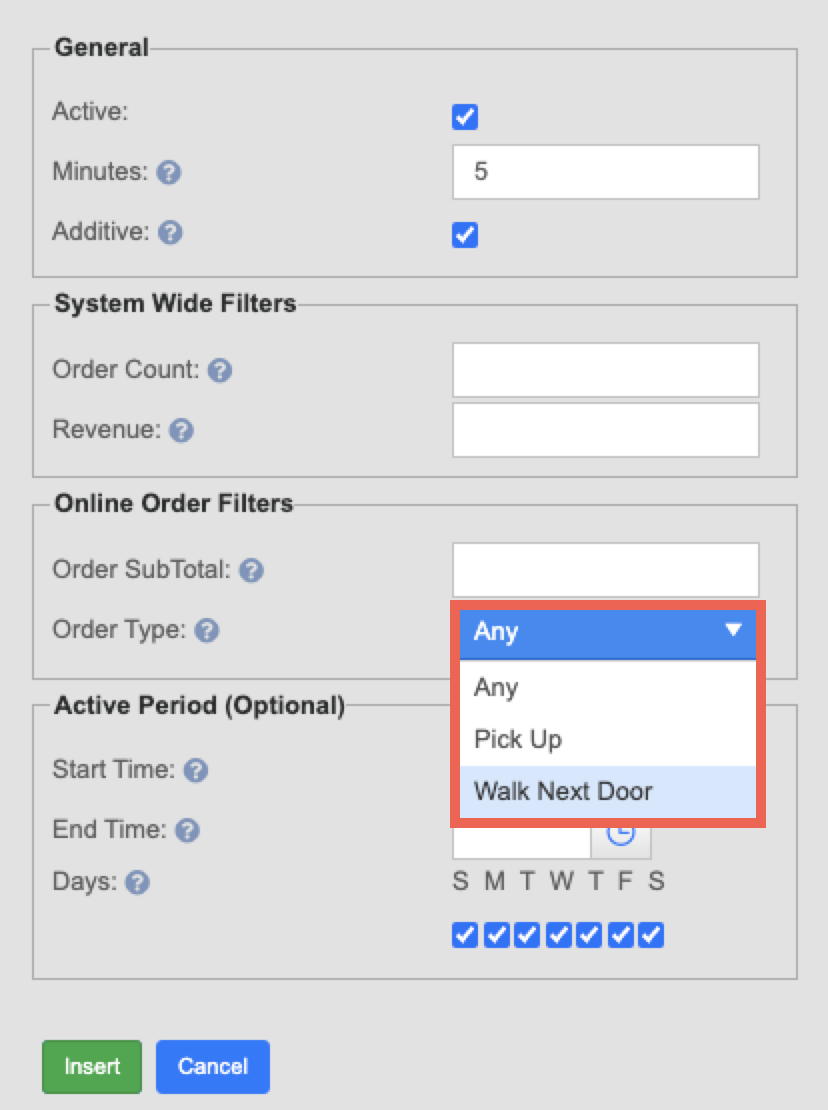
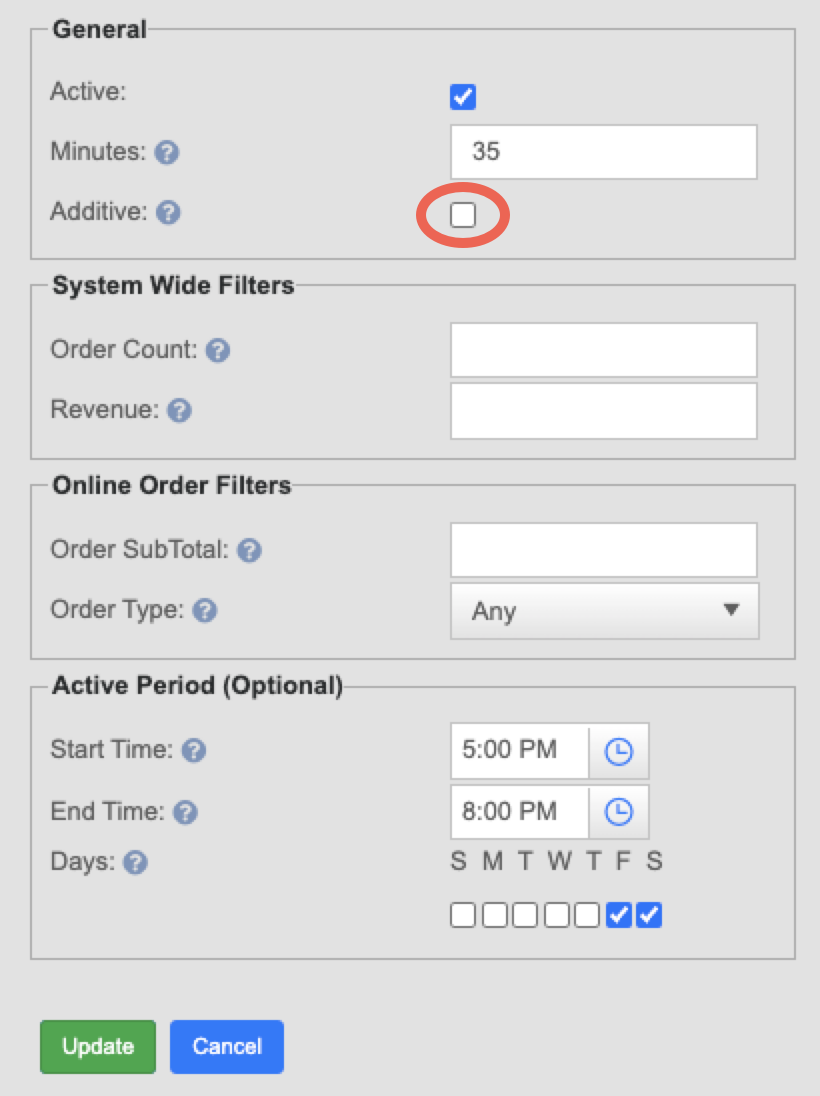
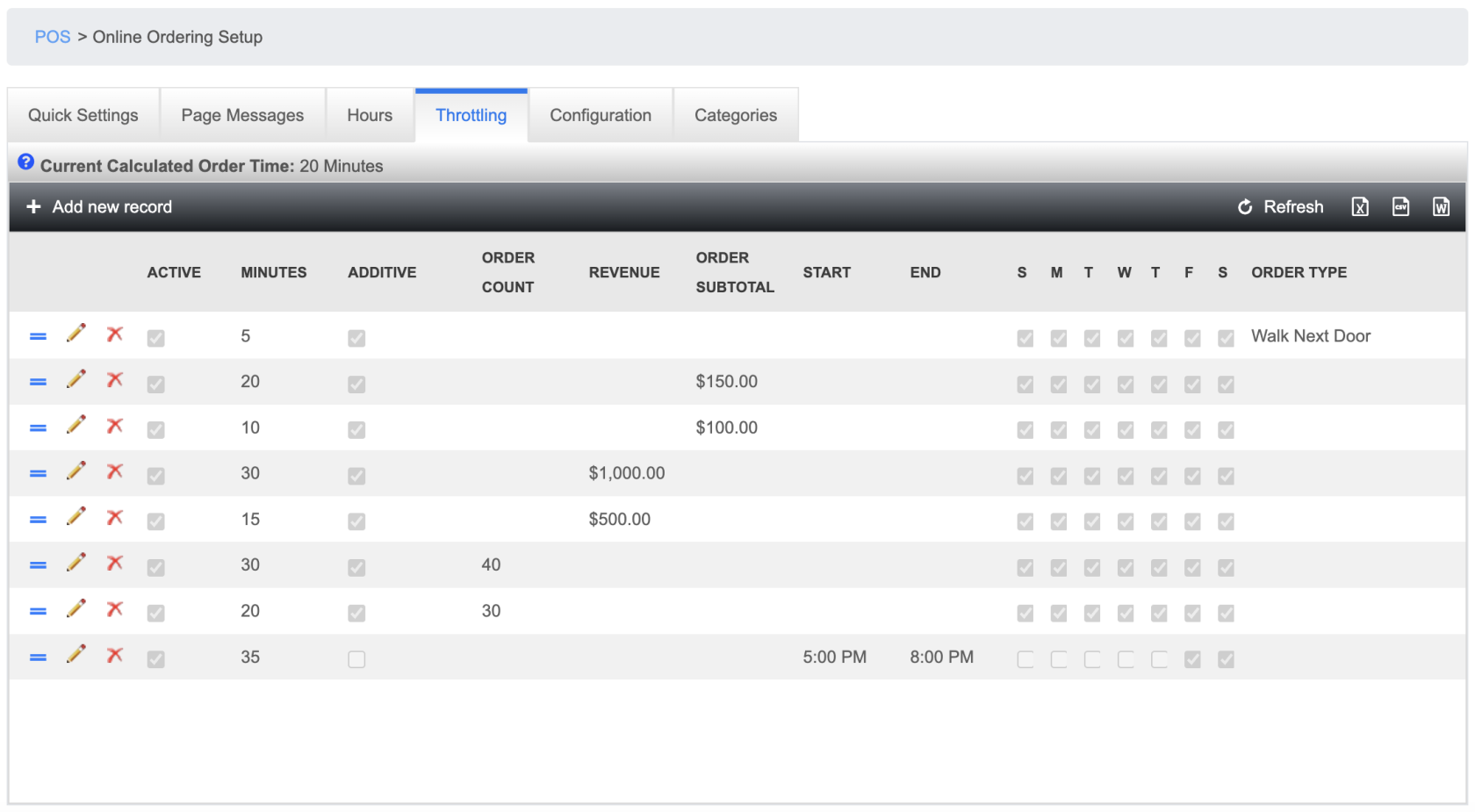
No Comments